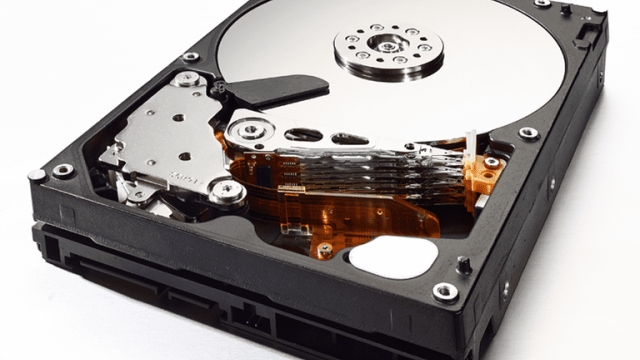Many of us find ourselves in a position where we need to dispose of an old hard drive containing sensitive information. Whether you’re a business owner wanting to protect your clients’ data or an individual looking to safeguard personal details, the need to properly destroy a hard drive is paramount. This is where hard drive destroyers and degaussers come into play.
Hard drive destroyers are specialized devices designed to ensure that no trace of your data remains on the drive. By physically destroying the hard drive, they guarantee that any information stored within is completely irretrievable. On the other hand, degaussers use powerful magnets to erase the data stored on magnetic media, effectively rendering it unreadable.
:max_bytes(150000):strip_icc()/hard-drive-ts-photography-getty-images-583dd83b5f9b58d5b1372b9b.png)
In this article, we will explore the top ten foolproof ways to obliterate your hard drive, focusing on the benefits and methods of using both hard drive destroyers and degaussers. We will cover everything from HDD destroyers, which can pulverize a hard drive into tiny fragments, to SSD destroyers, which can permanently erase the data stored on solid-state drives.
Whether you prefer the peace of mind offered by physical destruction or the efficiency of magnetic degaussing, we’ve got you covered. By following these tried and tested methods, you can ensure that your hard drive is completely and irreversibly wiped clean, protecting your sensitive information from falling into the wrong hands.
1. Hard Drive Destroyers
When it comes to securely disposing of your electronic data, hard drive destroyers are an essential tool to consider. These devices are specifically designed to irreversibly destroy hard drives, ensuring that sensitive information stored on them cannot be retrieved. Hard drive destroyers offer a range of methods to obliterate your hard drive, providing peace of mind that your data will remain protected.
One type of hard drive destroyer is a degausser. Degaussers use powerful magnetic fields to disrupt the magnetic properties of the hard drive, rendering it unreadable. By effectively erasing the data at the magnetic level, degaussers provide a highly secure method of destroying hard drives. It is important to note that degaussers are most effective on traditional hard disk drives (HDDs) rather than solid-state drives (SSDs).
Another type of hard drive destroyer is an HDD destroyer. These machines physically break apart hard drives, crushing them into small, irreparable pieces. HDD destroyers typically utilize hydraulic or mechanical force to ensure complete destruction. This method is particularly effective for both HDDs and SSDs, making it a versatile option for secure data disposal.
HDD destroyer
Similarly, SSD destroyers are specifically designed for destroying solid-state drives. These devices utilize strong force or heavy-duty shredding mechanisms to break SSDs into tiny fragments, rendering them unusable. SSD destroyers are ideal for ensuring the secure destruction of data stored on these flash-based storage devices.
When selecting a hard drive destroyer, it is important to consider factors such as the type of hard drive you need to destroy, the level of security required, and the volume of drives you need to dispose of. By utilizing hard drive destroyers, you can effectively obliterate your hard drives and eliminate any potential risks associated with data breaches or unauthorized access.
2. Degaussers: Magnetic Destruction
Degaussers are powerful tools for obliterating hard drives and ensuring that no trace of data remains. By using strong magnetic fields, these devices effectively erase all information stored on the drive, rendering it unusable.
When a hard drive is subjected to the intense magnetic force generated by a degausser, the magnetic orientation of the data stored on the drive is randomized. This randomization makes it impossible to recover any information from the drive, as the structure of the data becomes completely corrupted.
One advantage of using a degausser as a hard drive destroyer is its versatility. Not only can degaussers be used on traditional hard disk drives (HDDs), but they are also effective on solid-state drives (SSDs), making them a valuable tool for securely destroying data on various storage devices.
It is important to note that when using a degausser, the hard drive is physically altered and becomes permanently unusable. Therefore, it is crucial to ensure that all necessary data is backed up before subjecting it to the destructive power of a degausser.
In the next section, we will explore another method of hard drive destruction known as physical destruction. Stay tuned for more foolproof ways to obliterate your hard drive.
3. SSD Destroyers: Solid State Obliteration
When it comes to wiping out solid state drives (SSDs), specialized hard drive destroyers called SSD destroyers are the way to go. With their unique capability to completely obliterate every trace of data, these devices ensure that your sensitive information is beyond recovery.
SSD destroyers utilize powerful mechanisms to render SSDs completely unusable. By subjecting the drives to intense physical force and pressure, they break down the delicate components and render the stored data unreadable. These devices are engineered to dismantle SSDs in a way that guarantees irreversible destruction, providing peace of mind and ensuring data confidentiality.
Unlike traditional hard drives, SSDs lack a spinning platter, making them unable to be wiped clean using conventional degaussers or magnetic field-based methods. Consequently, specialized SSD destroyers are essential for achieving secure data disposal, especially in high-security environments where complete destruction is paramount.
Investing in an SSD destroyer ensures that you are taking the necessary steps to protect your confidential information. By obliterating your SSDs using these specialized devices, you can rest assured that your data is completely and irrecoverably destroyed. Say goodbye to worrying about data breaches or unauthorized access once and for all.






Recent Comments